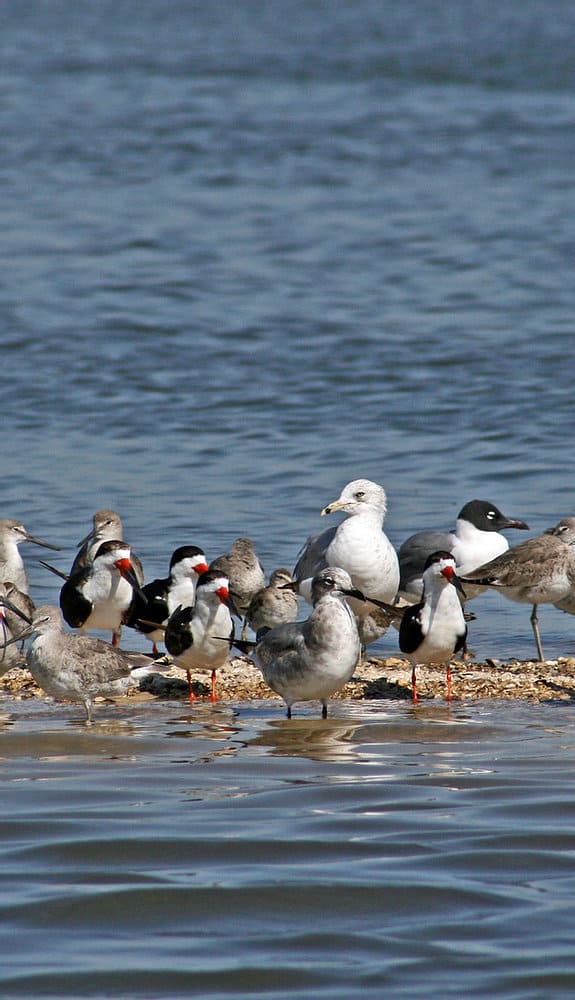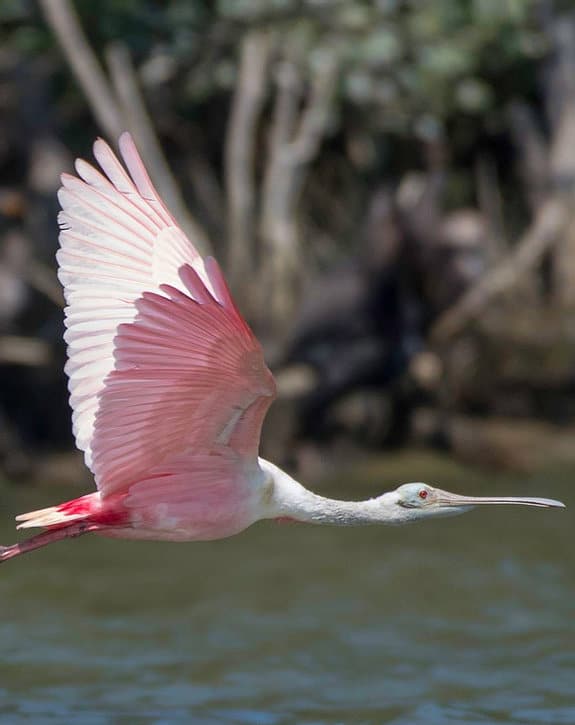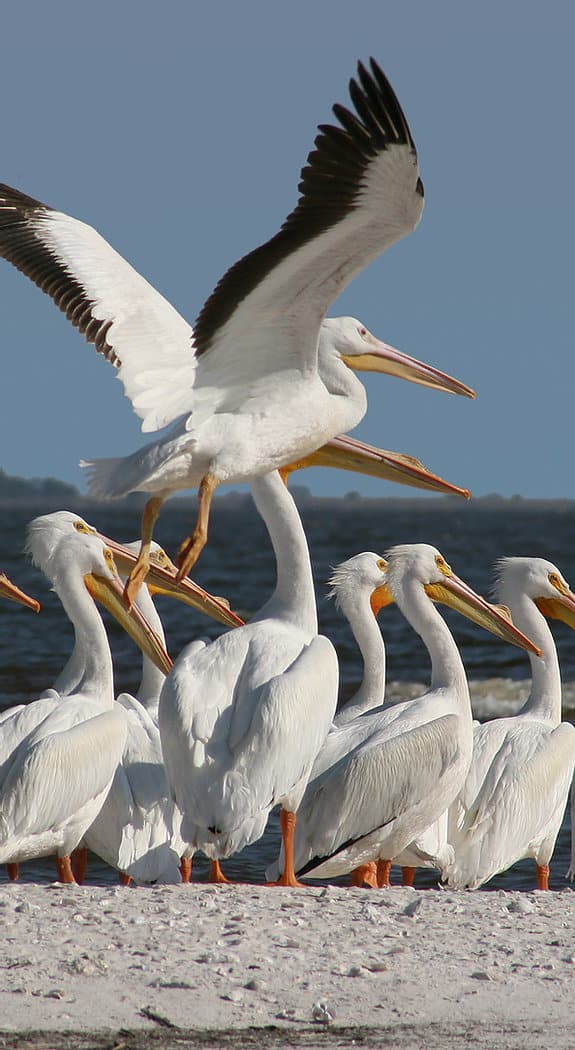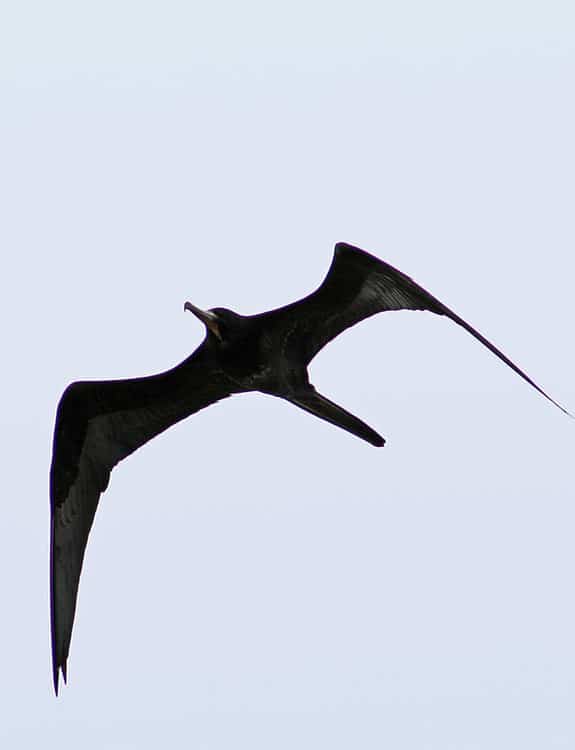Birding in Cedar Key
The remote and undeveloped islands and coastline of the Cedar Keys and Lower Suwannee National Wildlife Refuge offer truly rewarding, year-round birding opportunities.
Because of the remoteness and inaccessibility of our islands and coastline, most of our best-viewing sites can only be accessed by boat.

>
September

>
October through November

>
March through May
The Cedar Key bird population seems to remain relatively stable from November through February. Beginning in late March, many migratory species begin to leave. These include White Pelicans, Loons, Mergansers, Buffleheads, Grebes, and Avocets.
By late April most of our migratory birds have left, except those bound for the Arctic Tundra; most of our Sanderlings, Turnstones, Sandpipers, and Plovers. These birds, again in breeding plumage, begin to leave in late May.
March also begins the nesting season at the Seahorse Key Rookery. While estimates vary, it is accurate to say that thousands of White Ibis, Great Egrets, Snowy Egrets, Yellow and Black Crowned Night Herons, Tri-Colored Herons, Little Blue Herons, Great Blue Herons, Cormorants and Brown Pelicans nest in the relative safety of this refuge island. Although landing on this island is prohibited from March through June, we can enjoy viewing opportunities by cruising the shoreline, just outside the posted boundaries.
Hundreds of Magnificent Frigate birds begin arriving at Seahorse and Snake Keys by late April and May. Cedar Key is one of the few places in the U.S. to see these birds as it is the farthest North they come. They remain in Cedar Key until late Fall. By late Summer and Fall, the mature male birds begin to “display.” This practice involves inflating its bright red throat pouch, usually while roosting in shoreline trees.

>
June through August
Least Terns make their brief appearance during this short period. Other common summer birds include Osprey, Herons, Egrets, Ibis, Wood Storks, Roseate Spoonbills, Terns, Skimmers and Oystercatchers.
The birds listed are those we see on a fairly regular basis (often in very large numbers). I occasionally see birds that are not as common, e.g., Masked Booby, Northern Gannett, Sooty Tern, Stilt Sandpipers, and White Herons. Etc. Please let us know of any unusual sightings you come across in our area.
Many of these birds can be seen on our daily Coastal Tours. All tour times are affected by tides.